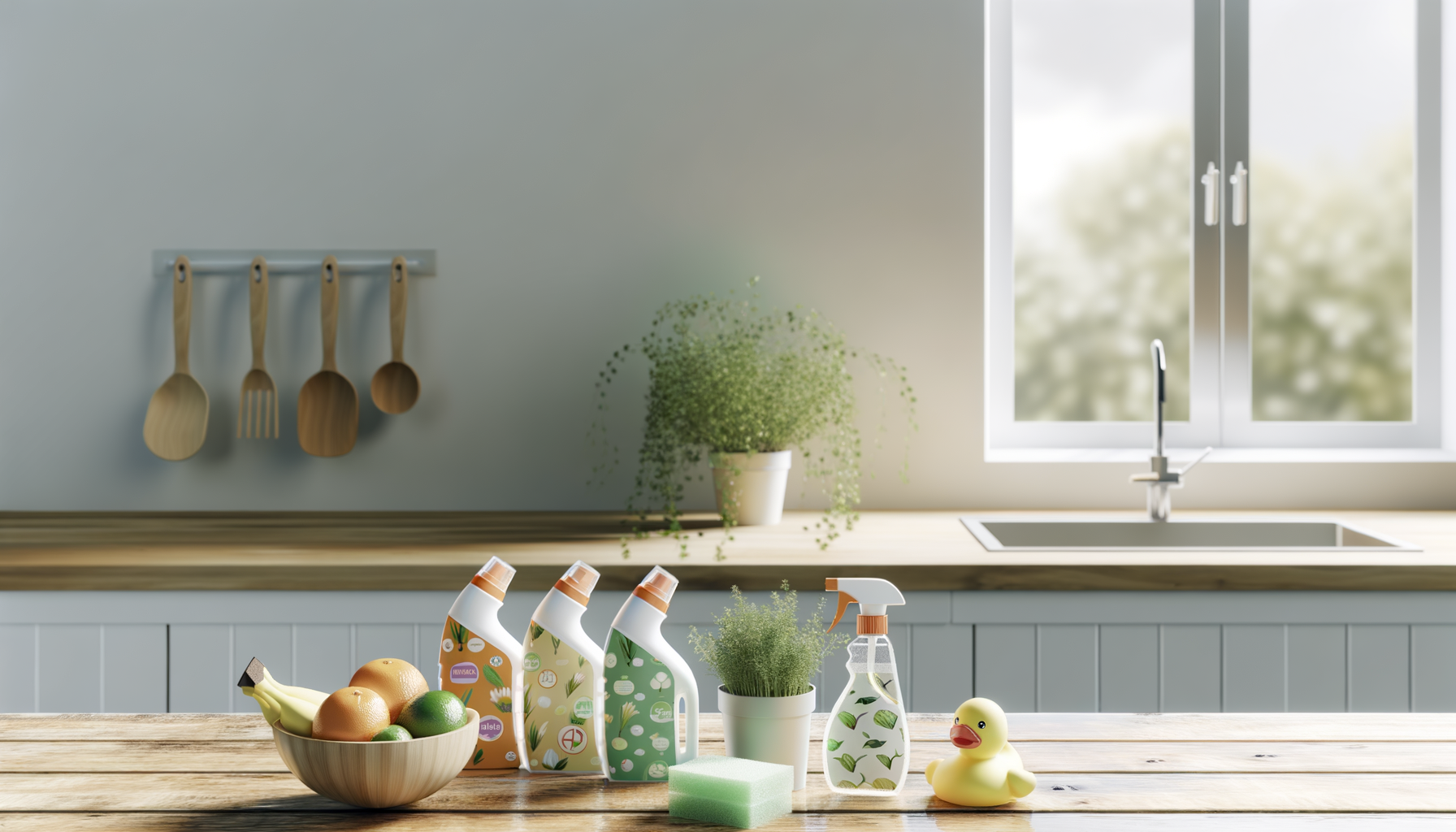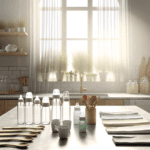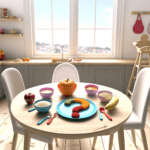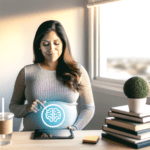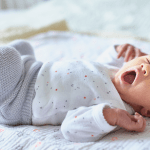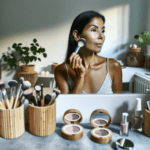Introduction
Understanding the Importance of Baby-Safe Cleaners
When expecting a new addition to the family, the safety and well-being of the unborn child become a paramount concern. It’s a time of joy, anticipation, and heightened responsibility, particularly when it comes to the products used in the home. Baby-safe cleaners are not just a preference but a necessity during pregnancy. The chemicals present in many household cleaners can pose risks to the developing fetus, whose systems are far more vulnerable than those of adults. Choosing baby-safe cleaning products is an essential step in creating a healthy and non-toxic environment for both mother and baby.
The Connection Between Household Cleaners and Pregnancy Health
During pregnancy, a woman’s body undergoes significant changes, making it more susceptible to the effects of chemical exposure. Common household cleaners, while generally safe, can contain substances that may irritate or harm the expectant mother and her baby when used improperly or in high concentrations. Corrosive products, such as bleach and oven cleaners, can irritate the respiratory tract, and heavy-duty cleaners with solvents may release toxic substances. Therefore, it is crucial to understand the impact of these chemicals and to take measures to limit exposure by selecting safer alternatives and following product instructions diligently.
Navigating the Article: What to Expect
This article serves as a comprehensive guide for expectant parents on how to navigate the myriad of cleaning products available, with a focus on selecting those that are safe for both mother and baby. We will delve into the risks associated with chemical exposure during pregnancy, highlighting common harmful chemicals found in household cleaners and their potential health impacts. We will also provide insights into identifying safe ingredients, understanding product labels and certifications, and the role of pH in cleaning products.
For those interested in a more hands-on approach, we will explore DIY natural cleaning solutions, offering simple recipes for everyday cleaning and safety tips for homemade products. Additionally, we will guide you through choosing the right products for different household areas, such as the kitchen, bathroom, nursery, and laundry room. To further support a chemical-free home, we will suggest lifestyle changes and green cleaning habits that can be easily incorporated into your daily routine.
By the end of this article, you will be equipped with the knowledge to make empowering choices for a healthier pregnancy and a safer home environment. We aim to provide you with the tools for continued learning and adaptation, as well as support and resources for non-toxic living.
The Risks of Chemical Exposure During Pregnancy
Common Harmful Chemicals in Household Cleaners
While many household cleaners are deemed safe for use during pregnancy, certain chemicals pose risks and should be used with caution or avoided. Heavy-duty cleaners such as undiluted bleach, tile cleaner, and oven cleaner can release harmful substances. Air fresheners also contain volatile organic compounds (VOCs) that may be detrimental when inhaled. Other chemicals to be wary of include pesticides, herbicides, solvents used in dry cleaning, and those found in some paints and nail polishes, such as dibutyl phthalate, toluene, and formaldehyde.
Potential Health Impacts on Mother and Baby
Chemicals absorbed through the skin or inhaled can enter the bloodstream and potentially cross the placenta to the developing baby. Studies have linked exposure to certain household chemicals with respiratory issues in children, such as wheezing and lower respiratory infections. Furthermore, exposure to lead in old paint can lead to serious health issues like premature birth, low birth weight, and developmental delays. It is also important to note that after birth, babies can be exposed to chemicals through breastmilk or by putting objects in their mouths.
Understanding Endocrine Disruptors
Endocrine disruptors are chemicals that can interfere with the endocrine (hormone) system. These substances, which can be found in various household products, may mimic or interfere with the body’s hormones. Bisphenol A (BPA), commonly found in plastics, is one such chemical. Exposure to BPA during pregnancy has been associated with brain and behavior problems in children and an increased chance of childhood asthma.
The Precautionary Principle in Pregnancy
The precautionary principle suggests that if an action or policy has a suspected risk of causing harm to the public or to the environment, in the absence of scientific consensus, the burden of proof falls on those taking the action. In the context of pregnancy, this principle advises expectant mothers to avoid exposure to potentially harmful chemicals even if definitive evidence is lacking. It is better to err on the side of caution and choose safer alternatives or minimize the use of certain products to protect the health of both mother and baby.

Do you have the most commonly used but toxic, disease bringing chemicals in your skin care? Many chemicals in skincare are hormone disruptors and make menopause symptoms worse.
Find out more…
Identifying Safe Ingredients
Natural vs. Synthetic: What’s the Difference?
When it comes to household cleaners, the terms “natural” and “synthetic” can be somewhat misleading. Natural ingredients are derived from plants, minerals, or animals and are not chemically altered. They are often perceived as safer and more environmentally friendly. On the other hand, synthetic ingredients are made through chemical processes and may include compounds not found in nature. While some synthetic ingredients can be harmful, not all are dangerous; some are rigorously tested for safety. The key is to understand which synthetic ingredients pose risks, especially during pregnancy, and to choose products wisely.
Key Ingredients to Look For
When selecting baby-safe cleaners, look for products containing ingredients such as baking soda, vinegar, and castile soap. These natural substances are known for their cleaning power without the risks associated with harsh chemicals. Additionally, plant-based surfactants from coconut or corn can effectively lift dirt and grease. Opt for products with essential oils for fragrance instead of synthetic perfumes, but be cautious as some oils can still cause sensitivities.
Understanding Labels and Certifications
Labels and certifications can be helpful but also confusing. Look for third-party certifications such as EWG Verified or USDA Organic, which indicate that a product has been evaluated for safety and environmental impact. The term “fragrance-free” is preferable to “unscented,” as the latter may contain masking agents. Beware of vague claims like “green” or “eco-friendly,” which are not regulated and may not guarantee safety.
The Role of pH in Cleaning Products
The pH level of a cleaning product can affect its ability to clean and its safety. Neutral pH cleaners are gentle and safe for most surfaces, while acidic cleaners (like vinegar) are good for descaling and removing mineral deposits. Alkaline cleaners (like baking soda) can cut through grease and grime. For baby-safe cleaning, neutral to mild alkaline or acidic solutions are generally recommended, as they are less likely to cause irritation or harm.
DIY Natural Cleaning Solutions
Benefits of Homemade Cleaners
When expecting, the safety of your unborn child is paramount. Homemade cleaners offer a myriad of benefits, particularly for pregnant individuals. They are cost-effective, as they often use ingredients already found in your pantry. Additionally, they are environmentally friendly, reducing the number of chemicals released into our ecosystem. Most importantly, DIY cleaners are non-toxic, ensuring that you are not exposing yourself or your baby to potentially harmful substances. By taking control of the ingredients in your cleaning products, you can create a safer home environment during your pregnancy.
Simple Recipes for Everyday Cleaning
- All-Purpose Cleaner: Mix equal parts of water and white vinegar in a spray bottle. Add a few drops of lemon essential oil for a fresh scent.
- Glass Cleaner: Combine 2 cups of water, 1/2 cup white or cider vinegar, and 1/4 cup rubbing alcohol with a 70% concentration. Use a spray bottle to apply and wipe clean with a microfiber cloth.
- Bathroom Scrub: Make a paste with baking soda and water, and add a few drops of tea tree oil for its antibacterial properties. Apply with a sponge, scrub, and rinse.
- Floor Cleaner: Add 1/2 cup of white vinegar to a gallon of warm water. For hardwood floors, swap vinegar with a mild dish soap to prevent damage.
Safety Tips for DIY Cleaners
While homemade cleaners are generally safe, it’s important to follow certain precautions. Always label your homemade cleaners clearly and keep them out of reach of children and pets. When mixing ingredients, do so in a well-ventilated area to avoid inhaling any strong scents, especially if you’re using essential oils. Even natural ingredients can cause reactions, so wear gloves if you have sensitive skin. Lastly, although rare, never mix vinegar with bleach as it creates toxic chlorine gas.
Storing and Labeling Homemade Products
Proper storage and labeling of your DIY cleaning solutions are crucial for maintaining their effectiveness and ensuring safety. Store your homemade cleaners in clean, airtight containers, preferably made of glass as some essential oils can degrade plastic over time. Always label each container with the contents and date made, as natural cleaners have a shorter shelf life than commercial products. Keep these solutions in a cool, dark place to preserve their potency and prevent degradation.
By embracing DIY natural cleaning solutions, you are taking a significant step towards protecting your health and that of your baby during pregnancy. With simple ingredients and a little bit of effort, you can maintain a clean and safe home environment without the risks associated with many commercial cleaning products.
Do you know the 3 main ways how your body is exposed to harmful chemicals, which affect your hormones, your thyroid, health and beauty?
If not, it may be time to learn about them. It takes about 1-2 minutes.
We have a few suggestions how to avoid these silent health and immune system killers in our new guide.
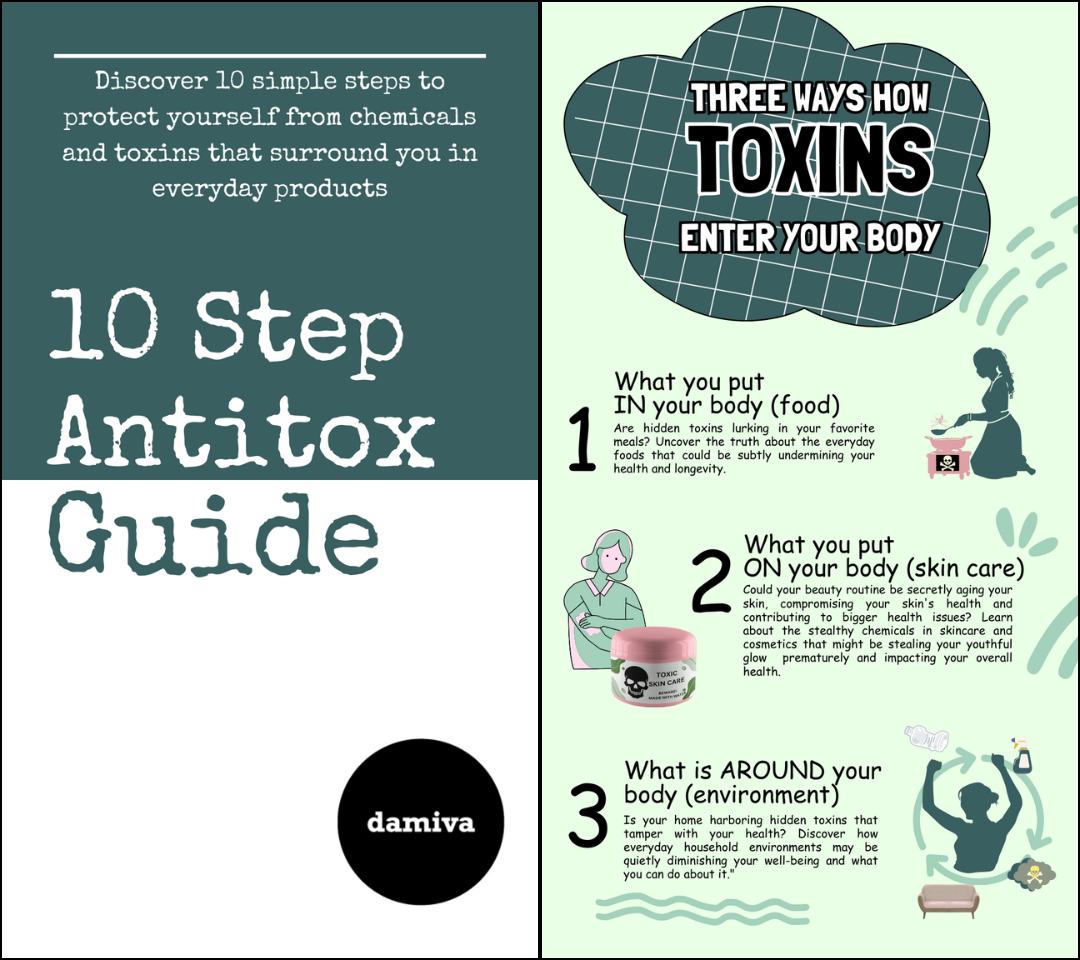
Choosing the Right Products for Different Household Areas
Kitchen Cleaners
When it comes to cleaning the kitchen, it’s essential to choose products that are effective yet safe for expectant mothers. Dishwasher and laundry detergents, as well as window cleaners and all-purpose cleaners, are generally safe to use during pregnancy. However, it is advisable to opt for products with low chemical content and avoid corrosive substances like undiluted bleach. For surfaces that come into contact with food, consider using natural cleaners like baking soda or vinegar. Always ensure the area is well-ventilated, and wear gloves to minimize skin contact with cleaning agents.
Bathroom Cleaners
Bathrooms require regular cleaning to prevent mold and mildew, but the enclosed space can trap fumes from strong cleaning agents. It’s best to avoid products with harsh chemicals, such as tile cleaners and those containing bleach or ammonia. Instead, look for bathroom cleaners labeled as non-toxic or eco-friendly. If you must use stronger products, do so sparingly, and make sure the room is well-ventilated. Alternatively, you can create a paste of baking soda and water for scrubbing or use hydrogen peroxide as a disinfectant.
Nursery and Toy Cleaners
The nursery should be a sanctuary for your baby, free from harsh chemicals. Choose cleaners specifically designed for children’s rooms and toys, which are usually milder and free from toxic substances. For toys, a simple mixture of warm water and mild soap is often sufficient. For disinfecting purposes, diluted vinegar can be used, but ensure that it is thoroughly rinsed off to avoid any lingering odors. Always dry toys and surfaces completely to prevent mold growth.
Laundry Detergents and Fabric Softeners
Laundry products can leave residues on clothing and bedding, which come into direct contact with your skin. During pregnancy, it’s wise to use detergents and fabric softeners that are fragrance-free and dye-free to reduce the risk of skin irritation. Look for products labeled as hypoallergenic or made for sensitive skin. Additionally, consider using wool dryer balls instead of fabric softeners; they are natural, chemical-free, and can help to soften fabrics.
Remember: Always read and follow the instructions on cleaning product labels. Never mix different cleaners, as this can lead to dangerous chemical reactions. If you’re unsure about the safety of a product, consult the Environmental Working Group’s website for safety ratings or ask your healthcare provider for advice.
By the way, something for you, a little gift!!!
I am just in the middle of publishing my book. It’s about How women can balance their hormones. One part is about food and diet, of course.
Follow this link and enter your email.
I will send you this part of the book for free once the book is published. It has many concrete, practical tips and recipes and will help you feel better during menopause or times of Big hormonal fluctuations.
Annette, Damiva Lead for Health & Wellness

Lifestyle Changes for a Chemical-Free Home
Adopting a Minimalist Cleaning Approach
Embracing a minimalist cleaning approach during pregnancy not only simplifies your routine but also reduces the number of chemicals in your environment. This strategy involves using fewer products and choosing those with simpler, more natural ingredients. By focusing on the essentials, you can maintain a clean home with less effort and lower risk of exposure to potentially harmful substances. Key steps include decluttering your cleaning supplies, opting for multi-purpose cleaners, and avoiding products with a long list of unrecognizable ingredients.
Incorporating Green Cleaning Habits
Green cleaning habits are essential for a healthier pregnancy and a safer home environment. Start by choosing products with eco-friendly labels and those rated highly by the Environmental Working Group (EWG). Prioritize non-toxic and biodegradable options. Additionally, improve ventilation when cleaning to minimize inhalation of any fumes, and consider using microfiber cloths that can clean effectively with just water. Incorporating plants that purify the air can also contribute to a cleaner living space.
Educating Family Members on Safe Cleaning Practices
Creating a chemical-free home is a team effort. It’s important to educate all household members about the importance of using baby-safe cleaners and the risks associated with conventional products. Share information on reading labels, understanding the potential hazards, and the benefits of using safer alternatives. Encourage family members to adopt these practices and to be mindful of the cleaning products they bring into the home.
Regular Detoxification of Living Spaces
Regularly detoxifying your living spaces helps to maintain a low-toxin environment. This can be achieved by periodically purging chemical-based products, deep cleaning with safe ingredients, and ensuring that your home has adequate air filtration. Consider using natural air fresheners, such as essential oils or baking soda, to keep your home smelling fresh without the use of synthetic fragrances. Additionally, adopting a “shoes-off” policy can prevent outdoor pollutants from entering your home.
In conclusion, by adopting a minimalist cleaning approach, incorporating green cleaning habits, educating family members, and regularly detoxifying your living spaces, you can create a safer, more nurturing environment for both you and your baby. These lifestyle changes not only contribute to a chemical-free home during pregnancy but also set a foundation for continued non-toxic living for your growing family.
Do you know the three main ways that your body gets in touch with harmful chemicals with everyday products? Knowledge is Power!
The Ultimate Detox Guide will tell you how to lower your exposure to harmful chemicals!

Conclusion
Empowering Choices for a Healthier Pregnancy
Throughout this article, we have explored the myriad of household cleaners and their potential impacts on pregnancy health. It is evident that the choices we make in our homes can have profound effects on both maternal well-being and fetal development. Empowering expectant mothers with knowledge about baby-safe household cleaners is a critical step towards fostering a healthier environment for their unborn children. By opting for products with natural ingredients, avoiding those with harmful chemicals, and embracing DIY solutions, mothers can take proactive measures to safeguard their health and that of their babies.
Continued Learning and Adaptation
The landscape of household products is ever-evolving, with new formulations and ingredients constantly emerging. As such, the journey towards a non-toxic home is ongoing. Continued learning about the latest research findings and adapting to new information is essential. Expectant mothers are encouraged to stay informed about the safety profiles of household cleaners and to be flexible in changing their purchasing habits as new evidence comes to light. This adaptive approach ensures that the choices made are always aligned with the latest health and safety standards.
Support and Resources for Non-Toxic Living
Fortunately, expectant mothers are not alone in their quest for a chemical-free home. There is a wealth of support and resources available to guide them. From online communities sharing non-toxic living tips to organizations that certify safe household products, help is at hand. Leveraging these resources can simplify the process of selecting baby-safe cleaners and contribute to a supportive network that champions the health of families and the environment. By making informed choices, seeking continual education, and utilizing available support, mothers can create a nurturing and safe space for their children to thrive.
